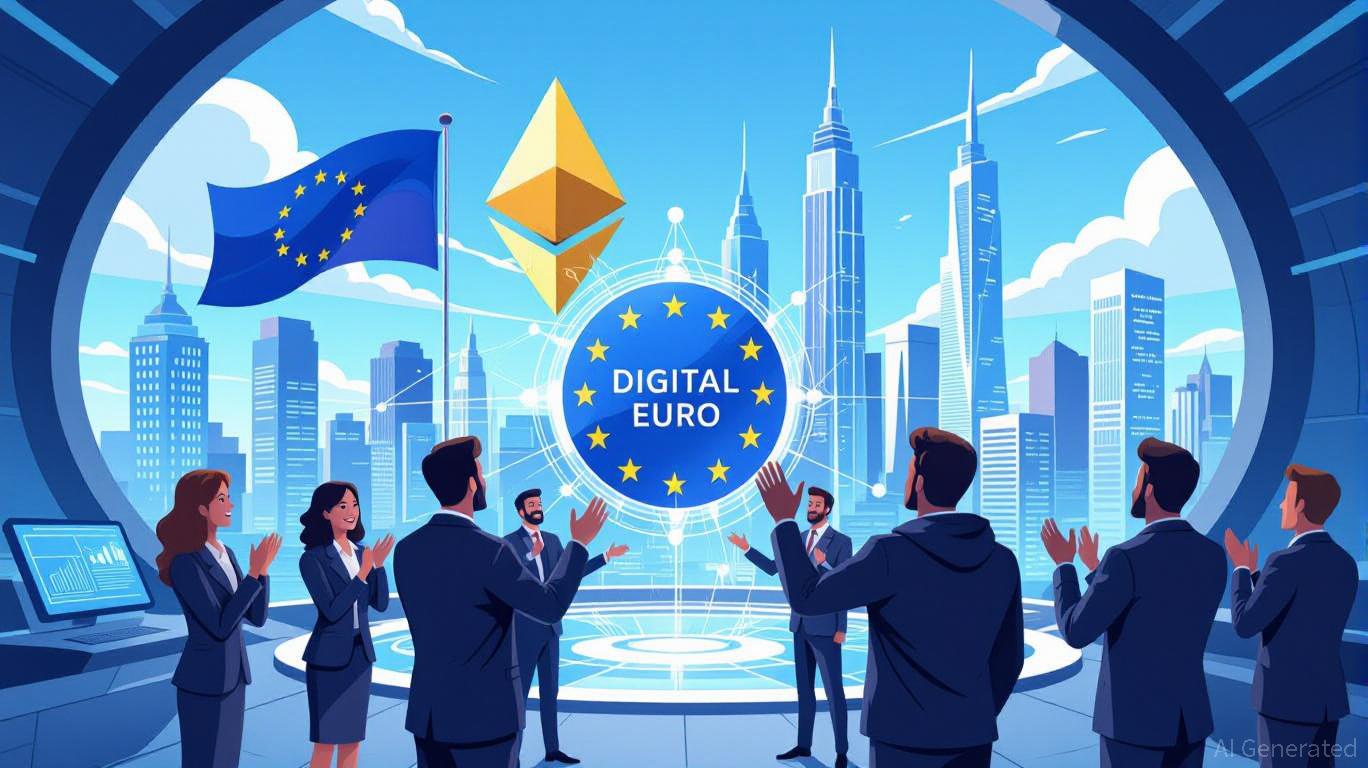The European Union’s exploration of public blockchains like Ethereum and Solana for its digital euro initiative is not just a technical pivot—it’s a geopolitical and financial earthquake. By shifting from a private, permissioned ledger to open-source infrastructure, the EU is signaling its intent to reclaim digital financial sovereignty from U.S. dollar-backed stablecoins, which dominate 98% of the $288 billion stablecoin market. This move could redefine the role of blockchain infrastructure providers and European fintech ecosystems, creating both opportunities and disruptions.

Strategic Advantages: Why Ethereum and Solana?
Ethereum’s dominance in decentralized finance (DeFi) and stablecoin ecosystems makes it a natural fit for a programmable digital euro. Its smart contract capabilities could enable the euro to interact seamlessly with tokenized assets, cross-chain bridges, and DeFi protocols, unlocking use cases like automated cross-border settlements and yield-generating savings accounts. Meanwhile, Solana’s high throughput (up to 65,000 transactions per second) and sub-cent transaction fees position it as a scalable solution for a CBDC designed for mass adoption.
The EU’s pivot to public blockchains also addresses a critical vulnerability: the risk of marginalizing the euro in a world where 90% of global cross-border payments are denominated in U.S. dollars. By anchoring the digital euro in open-source infrastructure, the EU can ensure interoperability with global crypto networks, reducing reliance on U.S. payment rails and fostering a competitive digital currency ecosystem.
Financial Implications for Blockchain Infrastructure Providers
If the ECB selects Ethereum or Solana, infrastructure providers on these networks stand to gain exponentially. Ethereum’s validator network, already securing $18 billion in staked ETH, could see increased demand for node validation services as the digital euro’s transactions flow through the chain. Similarly, Solana’s high-performance architecture might attract institutional clients seeking low-cost, high-speed settlement solutions.
For investors, this means overweighting exposure to Ethereum and Solana-based infrastructure providers. Companies like Infura (Ethereum’s API gateway) and Solana Labs (Solana’s core development team) could see revenue surges as the ECB’s innovation platform tests public-chain integration. Additionally, layer-2 solutions like Arbitrum and Sui (which bridges with Solana) might benefit from cross-chain activity driven by the digital euro’s need for scalability.
Fintech Ecosystems: Winners and Losers
European fintechs could thrive in this new landscape. The digital euro’s integration with public blockchains would enable startups to build services like smart contract-based lending platforms, tokenized real estate, and micro-payment gateways for e-commerce. For example, a fintech leveraging Ethereum’s DeFi protocols could offer users instant access to liquidity without intermediaries, undercutting traditional banks’ fee-heavy models.
However, traditional banks face existential risks. The ECB’s two-tier distribution model—where supervised intermediaries distribute the digital euro—could erode banks’ role as payment gatekeepers. With the digital euro offering near-zero transaction costs, banks might see deposit outflows and reduced fee income. Fintechs that partner with these intermediaries, though, could capture market share by offering user-friendly interfaces for digital euro transactions.
Privacy vs. Transparency: The ECB’s Dilemma
A critical challenge remains: balancing public blockchain transparency with EU data privacy laws like GDPR. Public chains inherently expose transaction data, which conflicts with the ECB’s need to protect user anonymity. To address this, the ECB is exploring hybrid architectures that layer zero-knowledge proofs (ZKPs) over public blockchains. This could create a new market for ZKP developers and privacy-focused protocols like Aztec or Zcash.
Geopolitical Ramifications: A New Digital Currency Cold War
The EU’s move to public blockchains isn’t just about technology—it’s a geopolitical statement. By adopting open-source infrastructure, the EU is positioning itself as a counterweight to the U.S. dollar’s dominance in digital finance. This aligns with broader European efforts to assert technological sovereignty, such as the European Investment Bank’s Ethereum-based bond issuance in 2021.
For investors, this means the digital euro could become a geopolitical catalyst, driving institutional adoption of Ethereum and Solana. The ECB’s decision by late 2025 will likely trigger a surge in demand for infrastructure services, smart contract development, and cross-border settlement tools.
Investment Thesis: Where to Allocate Capital
- Ethereum and Solana Infrastructure Providers: Prioritize companies and protocols that enable node validation, smart contract development, and cross-chain interoperability.
- Privacy-Preserving Technologies: Invest in ZKP-based solutions that address GDPR compliance for public blockchains.
- European Fintechs with DeFi Integration: Target startups building on Ethereum and Solana to capitalize on the digital euro’s programmable capabilities.
- Hybrid Blockchain Architects: Watch for firms developing permissioned layers atop public chains to meet ECB governance requirements.
The EU’s digital euro is no longer a distant possibility—it’s a strategic imperative. For investors, the key is to position early in the infrastructure and ecosystems that will underpin this next-generation currency. The winners won’t just be the blockchains themselves, but the innovators who bridge the gap between central bank policy and decentralized finance.
In 2025, the digital euro’s architecture will be decided. By 2026, the financial world will be watching to see whether Europe’s gamble on Ethereum and Solana reshapes the future of money—or becomes a cautionary tale of regulatory overreach. For now, the cards are on the table, and the hand to play is clear.
You can contact us for more informations or ads here [email protected]